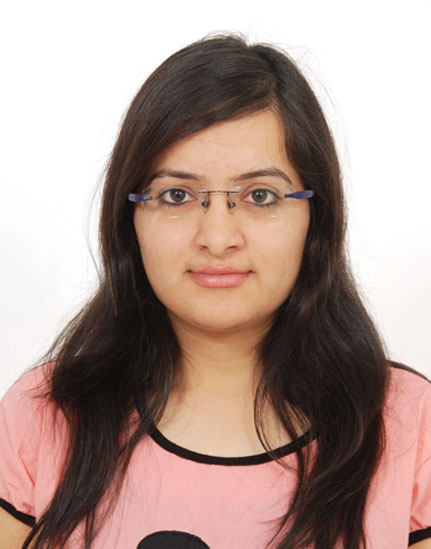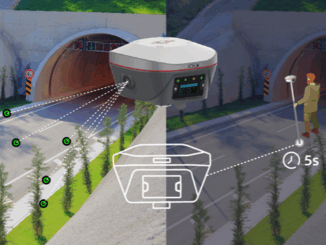

In Part 1, we explored the legacy of Dr. Sam Masry and the importance of the Sam Masry Award, which was recently awarded to Denis Hains. Here is the link to Part 1.
Lire la version française de l’article ici.
Now, we are excited to share Part 2 of this article. An exclusive interview with Denis Hains, where he discusses his career, the evolution of hydrography, and his vision for the future with respect to the Hydrospatial domain.
Kruti: 1- Can you tell us about your career journey and what led you to become a hydrographer?
Denis: “I graduated with a BSc in Geodesy from Laval University in Québec City over 40 years ago. Initially, I planned to pursue a career as a land surveyor. However, after being hired by the Canadian Hydrographic Service of Fisheries and Oceans Canada for a student job, I discovered and fell in love with hydrography, the “wet and humid” side of surveying”.
Kruti: 2- What does winning the 2024 Sam Masry Award mean to you personally and professionally?
Denis: “Receiving the 2024 Sam Masry Award is a great honour for me. As the third recipient of this prestigious award, presented every two years at the Canadian Hydrographic Conference (CHC), I feel proud to be acknowledged alongside Dr. Sam Masry, the first posthumous recipient, and Dr. Larry Mayer, the 2022 recipient. Dr. Masry’s dedication, commitment, and global entrepreneurial leadership made significant contributions to the hydrographic profession from and for Canada. My mostly “Pro Bono” (volunteer) contribution has always aimed to positively impact the global community, so being unexpectedly recognized for making constructive differences in the Hydrospatial domain and with the people in the community is deeply satisfying”.
Kruti: 3- How has the field of hydrography evolved since you started your career?
Denis: “The evolution of technology in hydrography has been revolutionary standing. I’ve used sextants, theodolites and microwave positioning systems before GPS and now GNSS. I’ve seen the progression from lead line measurements to Single Beam Echo Sounding, Multibeam Echo Sounding, LiDAR, and now Satellite-Derived Bathymetry, as well as the recent rise of aerial, surface, and subsurface autonomous vehicles to collect data remotely. Despite these advancements in data acquisition, the challenge remains to manage huge density and volume of hydrospatial data in a Findable, Accessible, Interoperable, and Reusable (FAIR) manner efficiently and timely”.
Kruti: 4- What role do emerging technologies, such as Artificial Intelligence (AI) and machine learning (ML), play in modern hydrography?
Denis: “Artificial Intelligence and Machine learning can and will play a significant role in hydrospatial data acquisition, management and sharing. The complexity of hydrospatial data demands advanced tools for efficient processing, visualization, and analysis. AI and ML can enhance data handling capabilities by automating routine tasks, identifying patterns, and providing predictive insights. This leads to improved efficiency in managing large datasets. AI’s and ML’s ability to integrate various data sources will also facilitate better decision-making and more effective data sharing within the global hydrographic and hydrospatial community”.
Kruti: 5- What do you see as the biggest challenges and opportunities for the hydrographic industry in the coming years?
Denis: “With over 70% of our blue planet covered by water and still about 74% of it not properly surveyed, we cannot manage what we have not measured. Our planet has two lungs: one green and one blue. The health of our oceans and water bodies is crucial for better understanding and adapting to climate change. The hydrospatial domain holds many unknowns, possibilities and opportunities. This decade is both exciting and critical. The United Nations Decade of Ocean Science for Sustainable Development, along with initiatives like the Nippon Foundation-GEBCO Seabed 2030 project, aims to address the challenges of the emerging blue economy”.
Kruti: 6- What are your thoughts on the future of hydrography in Canada specifically?
Denis: “Hydrography is the foundational science of the whole hydrospatial sciences and domain. It is essential for measuring key parameters such as water depth, water levels, and water circulation, which are critical for managing the three oceans surrounding Canada. The future lies in making hydrospatial data findable, accessible, interoperable, and reusable (FAIR). This will enable us to better understand and manage our marine environments, support sustainable development, and address challenges like climate change, marine navigation, and resource management. By ensuring hydrospatial data adheres to FAIR principles, we can improve data sharing, collaboration, and decision-making across various sectors”.
Kruti: 7- What advice would you give to young professionals aspiring to enter the field of hydrography?
Denis: “For me by experience, to be successful and recognized in hydrography and the broader hydrospatial domain, four key components are crucial:
- Fundamental Education: Obtain a solid, internationally recognized education in hydrography or one of the hydrospatial sciences. This foundational knowledge is essential for understanding the core principles and techniques required in the profession. Learn a second language; in Canada, try to master the 2 official languages early in your life or your professional career and get a third one if possible.
- Competency through Experience: Gain extensive, hands-on experience to demonstrate your expertise. Practical experience is vital for developing the skills and insights necessary to tackle real-world challenges in hydrography.
- Continuous Learning: Commit to lifelong learning to stay current with technological advancements and industry developments. Continuous education ensures that you remain relevant and can adapt to the evolving demands of the hydrospatial domain.
- Professional Networking is the most important asset: Establish, maintain, and grow a strong domestic and global professional network. Engage with peers, mentors, academic, governmental, non-governmental and industry leaders through ethical work practices and active participation in professional organizations and conferences. Networking facilitates knowledge exchange, collaboration, career and leadership development.
By focusing on these components—education, experience, continuous learning, and professional networking—you can build a successful career in hydrography and make significant contributions to the hydrospatial domain”.
In wrapping up, Denis Hains’ 2024 recognition with the respected Sam Masry Award reaffirms his remarkable contributions and leadership in hydrography and the whole Hydrospatial domain. His tireless enthusiasm and persistent dedication to advancing the science, technology, and standards of hydrography continue to inspire and shape the future of the Hydrospatial domain and ocean mapping worldwide. It is easy to follow Denis Hains and connect with him. He has been known and recognized as the best Hydrospatial Influencer on the LinkedIn network. Join him by becoming a member of the LinkedIn Hydrospatial Movement Community at: https://www.linkedin.com/groups/12556091/, it is free. You can easily reach him connect via LinkedIn messenger from anywhere around the world anytime!





Be the first to comment